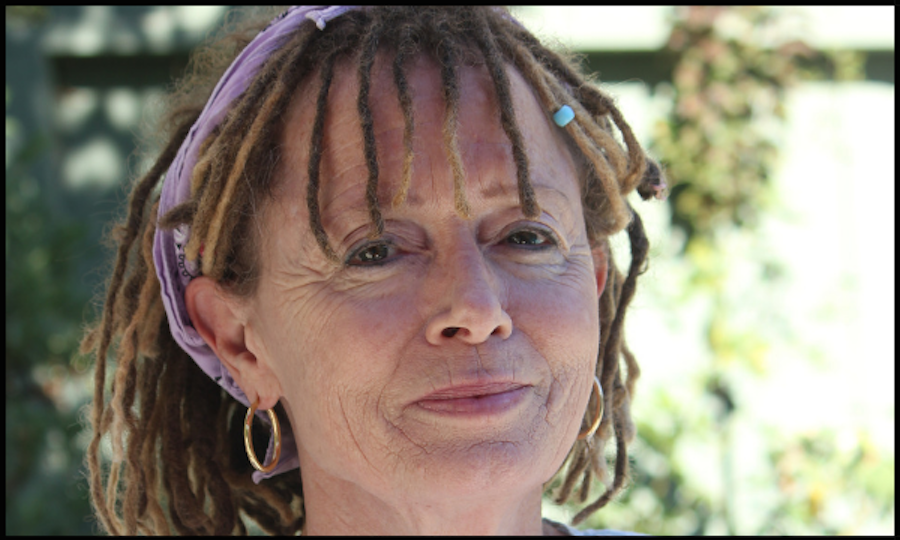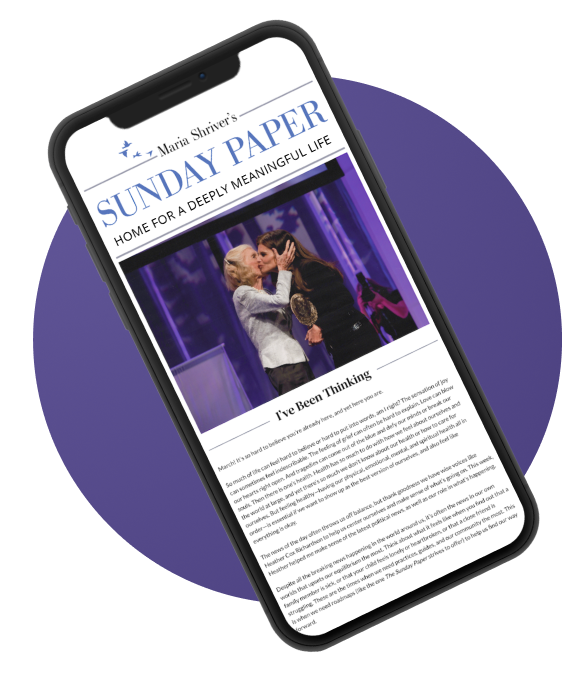Author Anne Lamott Helps Us Find the Hope Buried Within Each of Us

Some days there seems to be little reason for hope, in our families, cities, and world. Well, except for almost everything. The seasons change, a bone mends, Santa Rosa rebuilds after the fire. In the days after a cataclysmic school shooting, thousands of students took to the streets and the public squares. They got us back up onto our feet and changed the world.
Still, we hold our breath. In times of rational and primitive fear, hope has to do push-ups out in the parking lot to stay pumped—and it does. More and more, one hears Dr. King quoted everywhere, of finite disappointment versus infinite hope. Science, art, community, and nature make manifest that bad will or mistakes can lead to progress, like Bob Ross on his show The Joy of Painting reminding us that when we make big mistakes on canvas, we can turn them into birds—“Yeah, they’re birds now!”
In my current less-young age, I’ve learned that almost more than anything, stories hold us together. Stories teach us what is important about life, why we are here and how it is best to behave, and that inside us we have access to treasure, in memories and observations, in imagination. This is what I want to teach the little kids in my writing class, along with the most important thing anyone ever told me: Almost thirty years ago, when I called my mentor Horrible Bonnie at my most toxic and hysterical, having screwed up as a mother, she said to me, “Dearest? Here is the secret: You are preapproved.” I kept asking her, “Really?”
This is what I want to teach my niece and my grandson, too, my Sunday school kids, my dearest children, that they are preapproved. This is a come-as-you-are party. Who they were in utero, in kindergarten, in high school, in bed last night, was the very best they could be at the time; was in fact the only way they could be at the time. It is okay for them to make bad mistakes and decisions, to write ghastly first drafts. Hey, they’re all birds now.
Hope changes as you get a little older, from the hope that this or that happens, to hope in life, old friends, laughter, art, goodness, helpers. I hope and am amazed, some early mornings, at just finding myself alive. I thought as I approached eighteen years old that I was a goner for sure. And here I am, still alive, still here, and often in a good mood. Other early mornings? Not so much. My back aches, my vision fades, I can’t concentrate. It’s like in the Samuel Beckett novel—“you must go on, I can’t go on, I’ll go on.”
Of course, we are reduced at times, late at night, no matter how deep our faith in God or Goodness or one another, to quavering aspic. No matter how beautiful our views are of trees and birds and children, there are such scary pronouncements from Washington or our doctors that we can’t help hearing the descending tones, of age, global warming, the ticking of the nuclear clock, the heartbeats of the 7.6 billion other people around us. This stuff is scary and it’s very real. Yet hope is real, too.
Our minds are hardwired in many ways to do many things, only half of which from my observations are self-destructive. We can walk without thinking about how we do it, and stay upright. (Well, most of us can, most of the time.) We can recognize a face from the past in a fraction of a second. Our minds can instantly determine whether that face is “friend,” “foe,” or “unknown” in that same fraction. But if it is someone we’ve been introduced to that day, we might not be able to remember the person’s name ten minutes later. Most of our brains are very good at some things but not so good at others, prewired for certain tasks but not for everything, good enough for most of us and definitely for government work. And then there are the artists, musicians, scientists, painters of light, and physicists—Caravaggio, Rumi, Einstein. As soon as regular people like me can grasp that light is particles, like specks of sand, or that light is waves, like the ripples in water, then scientists step in and prove not only that light is both, but that when we observe light, we change it. I mean, come on, now.
Life is way wilder than I am comfortable with, way farther out, as we used to say, more magnificent, more deserving of awe and, I would add, more benevolent—well-meaning, kindly. Waves and particles, redwoods, poetry, this world of wonders and suffering, great crowds of helpers and humanitarians, here we are alive right now, together. I worry myself sick about the melting ice caps, the escalating arms race, and the polluted air as I look forward with hope to the cleansing rains, the coming spring, the warmth of summer, the student marches. John Lennon said, “Everything will be okay in the end. If it’s not okay, it’s not the end,” and as this has always been true before, we can hope it will be again.
We have all we need to come through. Against all odds, no matter what we’ve lost, no matter what messes we’ve made over time, no matter how dark the night, we offer and are offered kindness, soul, light, and food, which create breadth and spaciousness, which create hope, sufficient unto the day.
From ALMOST EVERYTHING by Anne Lamott. Published by arrangement with Riverhead Books, a member of Penguin Random House LLC. Copyright © Anne Lamott, 2018.
Anne Lamott is the author of the New York Times bestsellers Hallelujah Anyway; Help, Thanks, Wow; Small Victories; Stitches; Some Assembly Required; Grace (Eventually); Plan B; Traveling Mercies; Bird by Bird; and Operating Instructions. She is also the author of seven novels, including Imperfect Birds and Rosie. A past recipient of a Guggenheim Fellowship and an inductee to the California Hall of Fame, she lives in Northern California. Her new book, ALMOST EVERYTHING: Notes on Hope, is published by Riverhead Books. Find her online @AnneLamott on Twitter, Facebook and Instagram.
READ MORE STORIES THAT MOVE HUMANITY FORWARD
READ MORE STORIES THAT MOVE HUMANITY FORWARD
SIGN UP FOR MARIA’S SUNDAY PAPER

